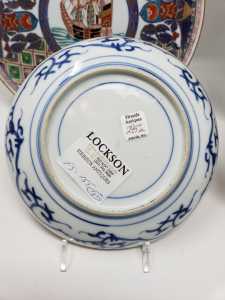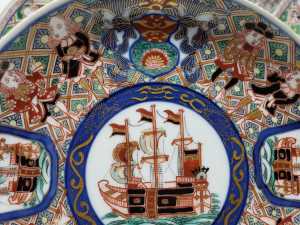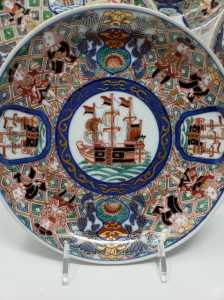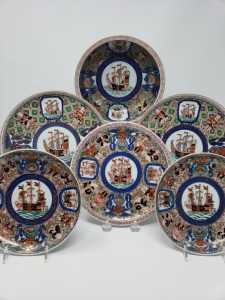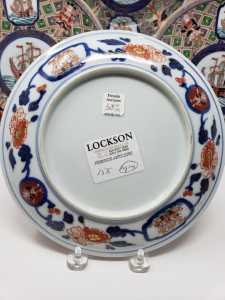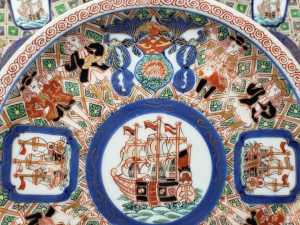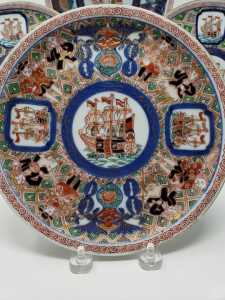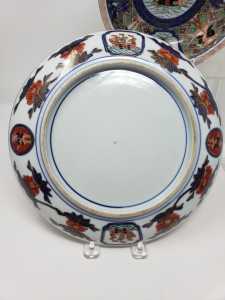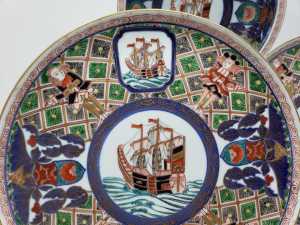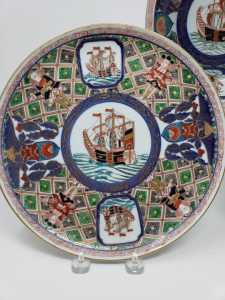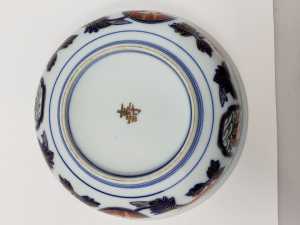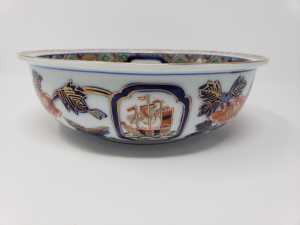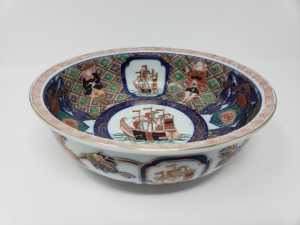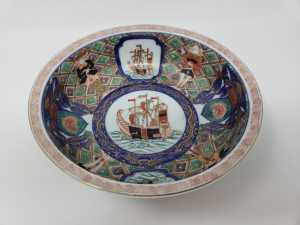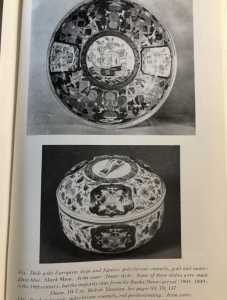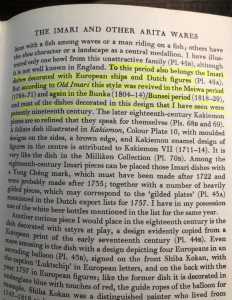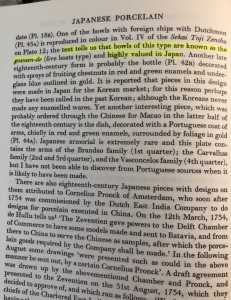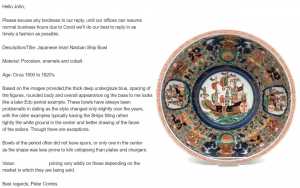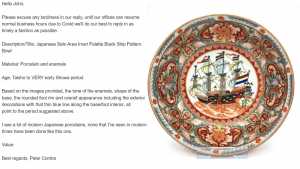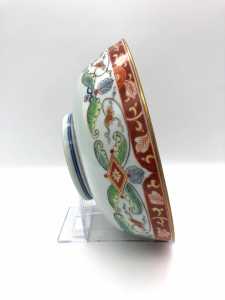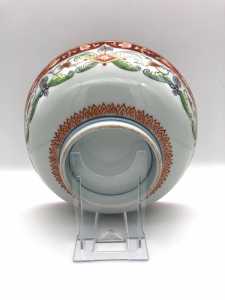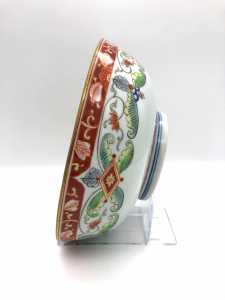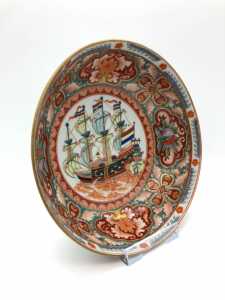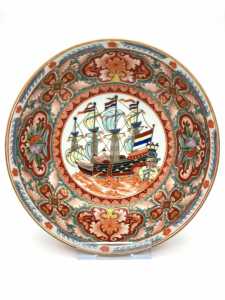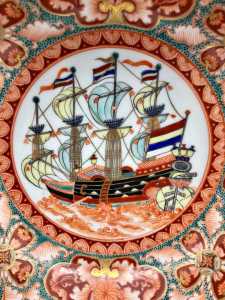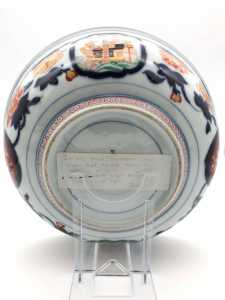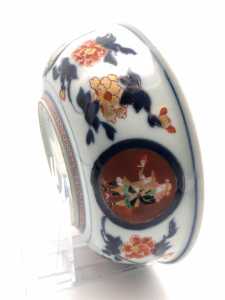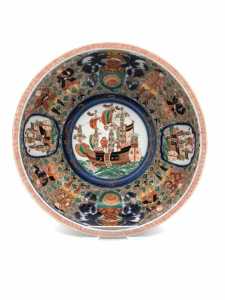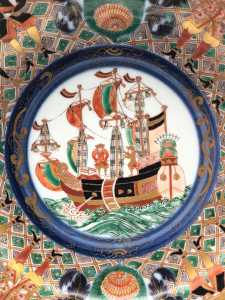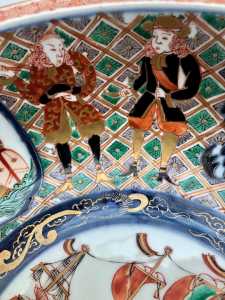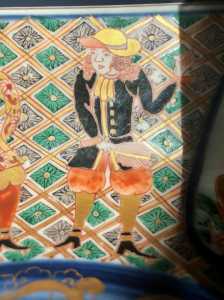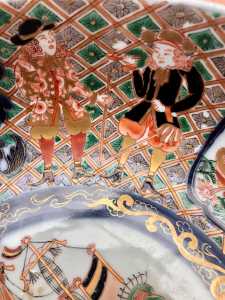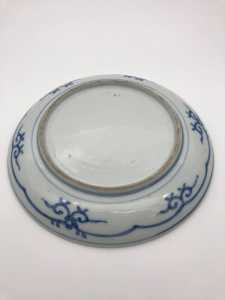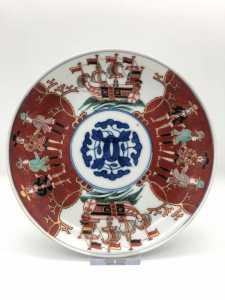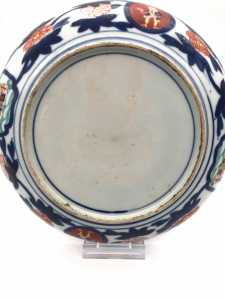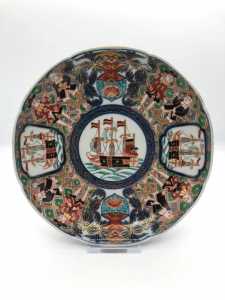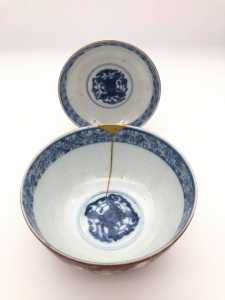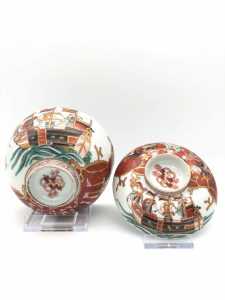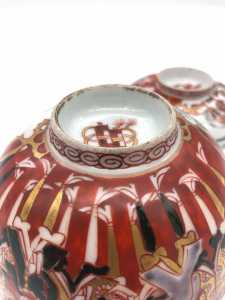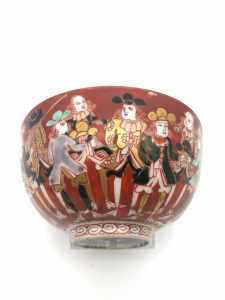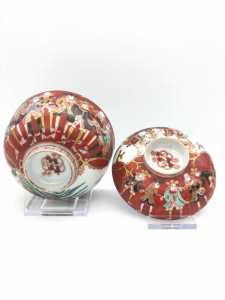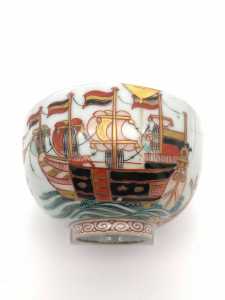The Chinese and Asian Art Forum. For Fans, Collectors and Dealers.
 Basic Rules For the BidAmount Asian Art Forum: Talk about whatever you want. You can even discuss and offer things that are for sale if they are authentic. Maximum image file size per post is 2 MB. Images of 700pxl x 700pxl are optimal if saved at a medium resolution. Be respectful of others and enjoy yourself. Click the YouTube link for a brief tutorial on using the forum. You can also EMBED Videos by cutting and pasting from You-Tube, Vimeo etc.
Basic Rules For the BidAmount Asian Art Forum: Talk about whatever you want. You can even discuss and offer things that are for sale if they are authentic. Maximum image file size per post is 2 MB. Images of 700pxl x 700pxl are optimal if saved at a medium resolution. Be respectful of others and enjoy yourself. Click the YouTube link for a brief tutorial on using the forum. You can also EMBED Videos by cutting and pasting from You-Tube, Vimeo etc.
NOTE: To post an item or add a new post, click open the category title from the FORUM LIST, and CLICK the Blue ADD TOPIC button.
Hello everyone. I just found the forum today and have spent a couple of hours reading through the posts. I've already learned more here than I could find using Google.
I have a very small collection of Black Ship Imari. It seems that even the tiniest detail makes all the difference in determining the age of the pieces and I just don't have the knowledge yet. Would it be possible to find out how old my pieces might be? If so, is it preferable to put each piece into it's own reply?
Here's a photo of the group and the two small bowls that are in the front of the picture. They're 7" in diameter.
@sassafras hello!! google: NANBAN 'BLACK-SHIPS' PATTERN
i think by comparison you can get a sense of period(?)
Thank you very much! While looking at pieces online, I noticed that most of the Dutchmen do not have painted shoes however a few do. Is that of any significance as far as age?
@sassafras Hold on until our resident expert John takes another break from his bar exam studies, he is @bartholin and has an impressive collection of black ships and one appears as his identifier, he will be able to address your questions and concerns, others may also have educated opinions on these interesting wares.
Thank you so very much!
They look good to me! I have one charger in that pattern from the early 19th c. You have quite the collection!
Thank you @sharonp for your very generous characterization, although I'd consider myself more of an enthusiast than an expert in this area! 😋
Hi @sassafras! Welcome to our forum - I hope you weren't waiting for my response as I am very much in the same predicament as you are with dating these pieces. You have a splendid collection, and I enjoyed seeing them! I hope you'll continue enjoying our little community here. 😊
As you've probably seen, there are plenty of contradictions and uncertainties discussing this pattern. The many variations further exacerbate the difficulties in prescribing general rules to look out for to help with dating.
My gut feeling is that the front pair and center back bowl are late 19th century Meiji, and the middle pair is late 19th/early 20th Meiji. I think the center plate might be the oldest of the bunch, perhaps late Edo or early Meiji.
My folder on this pattern is also limited, but these are what I was able to find in museums:
- First at the BM is attributed to 1801-1850.
- Second at the BM is attributed to "18thC" generally.
- Last at the MET is attributed to "Late 18th-early 19th".
Even the BM Curators have noted the difficulties of dating this pattern in the second link where they write:
"This piece with its central roundel of a Dutch ship and surrounding border of Dutchmen may be of a later date, when general knowledge of the appearance of Europeans had spread more widely into the general pictorial repertoire of the Japanese."
Some consider Roger Soame Jenyns to be the authority for general dating of this pattern, in his book "Japanese Porcelain" written in 1965. This is the relevant discussion:
You'll see that plate 45a is #1 at the British Museum in the link above. I've not yet cite-checked Old Imari, but his observation that most are "patently nineteenth-century" is the best we have to go on it, yet he doesn't narrow down the timeframe or provide guidelines to make that determination. He also doesn't make reference to any early 20th-century Meiji reproductions, which is unfortunate.
I had a couple of my pieces sent to Peter back when he only did email responses, and these were his email replies:
Peter attributes my first bowl to 1800-1820, which is likely within the 1804-1829 Bunka/Bunsei period that Jenyns referenced.
The issue then becomes - How do we differentiate pieces that fall within this late Edo (1804-1829) timeframe from late 19th/early 20th-century Meiji pieces? This is where I'm at a loss. Some folks really focus on indications of general wear, while others are trying to create general rules based on design execution.
Aside from general wear and other porcelain/glaze characteristics, some design elements that I like to look for when buying this pattern that I personally use for attributing this 1804-1829 date range are the following:
- Central ship that fills the central medallion tightly (as Peter suggested).
- Central ship that has two dutchmen on it.
- Not always the case, as with the MET example, although I'm unsure of the accuracy of the date on that one.
- Dutchmen with well-detailed faces and clothing.
- Highly subjective, but compare #1 at the BM in the above link for this.
- Dutchmen with relatively normal proportions
- Compare #1 at the BM again. Later Meiji examples seem to usually have excessively longer legs and a shorter torso.
- Waves that are green enameled.
I think the majority of these pieces date to the late 19th/early 20th century, and they can look a bit more rushed. These design elements are generally what I look for when attributing a piece to late Edo/Meiji or later:
- Smaller central ship
- Excessively large empty white spaces
- Compare the middle pair with the others in the group, especially around the "shield" surrounded by underglaze blue leaves.
Of course, these are just my personal observations that I've been using. We might be trying to find trends in design execution where they likely can't be found because of the large number of regions, kilns, and individual potters creating this popular motif.
I like collecting maritime subjects depicted on porcelain, and like odd variations even if later! I've posted most of my pieces here in the forum 😊 Most of them are Meiji or later with the exception of the bowl evaluated by Peter. I'll post them here again in case they've disappeared:
Jenyns doesn't discuss this alternate "black ships" design with a group of dutchmen on a red background alternating with the ship on a white background, but I think my rice bowl is late Edo and the plate is Meiji. I forgot to send it to Peter, but your post has reminded me to do that!
I enjoyed seeing your collection very much and can't wait to see more in the future. Thank you for posting them. I hope it was a bit interesting!
Kind regards,
John
A very detailed and informative response from @bartholin aka John. He certainly knows his stuff!
One other way that you can date Japanese plates is the number of spur marks. Technically spur marks were or the number presented help date Japanese wares. But not bowls!
The use of said were not used after about 1910. The number present also reduces during the late Meiji period 1868-1912.
However the size is of importance here. Technically the larger size the more spur marks.
From what I know spur marks is a good indicator of identifying Japanese porcelain plates. Chinese i believe did not use them.
Certainly by the Taisho period 1912-1926 one would rarely if ever see spur marks.
@sassafras you have purchased yourself a very nice collection.
Mark
Thanks to John and Mark. My Jenyns copy is well worn. However, I wish it had more blue & white illustrations. The photo section's focus is the wonderful color examples. As color illustrations in books of that time were mostly BxW. Mostly unknown to the greater public in the west before 1965. A great book! It was the first book I bought in 1970s in the PX at Camp Zama.
An other staple book of all times was the two volume "Cox Pottery and Porcelain" of 1970. Very useful for any pottery or Porcelain of the world!. It's Chinese and Japanese sections is complete with the first book of marks I had seen.
IMO, The Schiffer book "Japanese Pottery and Porcelain" is full of pictures and lacking on written information. While the Jenyns and Cox books are 80% information and 20% pictures - mostly BxW in the Cox.
Another book from Japan on Chinese porcelain with huge pictures (one picture per page). Not reading japanese I have no ideal if it is still available.
David
Thanks for visiting "The BidAmount Asian Art Forum | Chinese Art"
If you sell on eBay, or have a shop feel free to post images and descriptions and links.
Check back often for discussion about the latest news in the Chinese art and antique world. Also find out about the latest Asian art auctions at Sotheby's, Christie's, Bonhams and Tajans.
Auction results for: fine porcelain, ceramics, bronze, jade, textiles and scholar's objects. As well as Japanese, Thai, Vietnamese and other Asian cultures.
Thank you,
Peter Combs
Topics and categories on The BidAmount Asian Art Forum | Chinese Art
Kangxi vases, Kangxi dishes and chargers, Kangxi ritual pieces, Kangxi scholar's objects, Qianlong famille rose, Qianlong enamels, Qianlong period paintings, Qianlong Emporer's court, Fine porcelain of the Yongzheng period. Chinese imperial art, Ming porcelain including Jiajing, Wanli, Xuande, Chenghua as well as Ming jades and bronzes.
The BidAmount Asian Art Forum | Chinese Art
A free Asian art discussion board and Asian art message board for dealers and collectors of art and antiques from China, Japan, Korea, Thailand, Cambodia, Vietnam and the rest of Asia. Linked to all of the BidAmount Asian art reference areas, with videos from plcombs Asian Art and Bidamount on YouTube. Sign up also for the weekly BidAmount newsletter and catalogs of active eBay listing of Chinese porcelain, bronze, jades, robes, and paintings.
The art of calligraphy - and for the ancient Chinese it certainly was an art - aimed to demonstrate superior control and skill using brush and ink. Calligraphy established itself as one of the major Chinese art forms during the Han dynasty (206 BCE - 220 CE), and for two millennia after, all educated men were expected to be proficient at it.
The Museum’s collections of Asian art span nearly five millennia and encompass the cultures of China, the Himalayas, India, Japan, Korea, and Southeast Asia. In 2007, the Museum launched an initiative to create dedicated galleries for the collection, beginning with a gallery for the arts of Korea ...
Chinese art is full of symbolism, in that artists typically seek to depict some aspect of a totality of which they are intuitively aware.
China Online Museum is the finest online museum of Chinese art. It features Chinese calligraphy, painting, ceramics, bronzes, carving, and other artworks.
Chinese Ceramics & Works of Art. Overview Upcoming auctions Contacts Auction results ... Christie’s sales of Chinese ceramics and works of art showcase centuries of Chinese history. Held throughout the year in London, New York, Paris and Hong Kong, they attract a wide audience of collectors and connoisseurs vying for pieces as diverse as ...
Explore Asian Art Week. Contact the Specialist Department. Chinese Paintings ... Senior Specialist, Head of Sale. [email protected]. Tel:+1 212 641 5760. Bid in-person or online for the upcoming auction:Fine Chinese Paintings on 10 September 2019 at New York. Bid in-person or online for the upcoming auction:Fine Chinese Paintings on 10 ...
Discover an abundance of must-see art from all corners of a vast continent at Christie’s NY Asian Art Week. From contemporary classical and Chinese paintings to works with exemplary provenance from the Art Institute of Chicago, our Rockefeller Paza galleries will be full of ancient treasures and contemporary masterworks in a salute to the vibrant arts of Asia.
Sold to benefit The Art Institute of Chicago’s Asian Art Acquisition Fund, the sale features 84 lots with a focus on Ming and Qing porcelains, and offers a rare insight into the taste for collecting Chinese ceramics and works of art in the Midwest from the end of the 19th century through the 1980s. Highlights include two Wanli wucai garlic-head vases, a Qianlong mark and period, blue and ...
Specialist, Chinese Paintings, Christie's London Dr Malcolm McNeill is a Specialist in Chinese Paintings at Christie’s, based in London. He previously worked as an assistant curator of the Chinese collections and the Victoria and Albert Museum in London, as a researcher at the British Museum, and as a translator and tour guide at the National Palace Museum in Taipei.
The Christie's Education 2020 Conference: The Chinese Art Market 18 Jun 2019 Christie’s Education is delighted to announce our first international academic conference in Asia which will take place in Hong Kong from 26-27 November 2020 at the Hong Kong Convention and Exhibition Centre and will run in parallel with Christie’s Hong Kong Autumn Auctions.
The summer Chinese Art sale in Hong Kong will feature works of art from several private collections, including Qing porcelains and textile from the collection of the legendary Chinese art dealer A. W. Bahr (1877–1959), fine gilt bronze Buddhist sculptures from an old Hong Kong collection, an East Asian collection of Qing dynasty wine cups and jades, and a Japanese collection of Song ceramics ...
Sotheby's Chinese Works of Art Department holds two auctions each year in London, New York, Hong Kong and Paris.
Chinese Art - View Auction details, bid, buy and collect the various artworks at Sothebys Art Auction House.
With more than 340 Chinese works of art dating from the Neolithic to the Republic periods, highlights of this sale include a selection of Qing Imperial monochromes from the collection of Arnold and Blema Steinberg, early ceramics from the Art Institute of Chicago and Chinese porcelain and works of art from the collection of Henry Arnhold.
Results: Sotheby's Asia Week achieved $52.4 million in six strong auctions, exceeding pre-sale estimates. With 76.5% of lots sold and 60.3% of lots surpassing high estimates, the Asian art sales at Sotheby's indicate continued collector interest in the finest works of art from China, India and and the Himalayas.
Today's sale of Important Chinese Art will proceed as planned with sessions at 10 AM and 2 PM EDT. Sotheby's will be monitoring the weather conditions throughout the day and will be available to coordinate alternative bidding options should conditions make it difficult for clients to attend the auction in person.
Bonhams Chinese Art department is renowned for offering the finest works of art representing the richness and breadth of China's artistic heritage, particularly Imperial porcelain, white and spinach green jades, cloisonné and Buddhist art. Specialised international auctions are held globally, including London, Hong Kong and San Francisco.
Bonhams : Chinese Works of Art We use cookies to remember choices you make on functionality and personal features to enhance your experience to our site. By continuing to use our site you consent to the use of cookies. Please refer to our privacy and cookie policies for more information.
Bonhams Fine Art Auctioneers & Valuers: auctioneers of art, pictures, collectables and motor cars. We use cookies to remember choices you make on functionality and personal features to enhance your experience to our site. By continuing to use our site you consent to the use of cookies. ... Chinese Art (US) General enquiries
Bonhams : Fine Chinese Art We use cookies to remember choices you make on functionality and personal features to enhance your experience to our site. By continuing to use our site you consent to the use of cookies. Please refer to our privacy and cookie policies for more information.
Bonhams Fine Art Auctioneers & Valuers: auctioneers of art, pictures, collectables and motor cars Bonhams : Asian Art We use cookies to remember choices you make on functionality and personal features to enhance your experience to our site.
Bonhams are international auctioneers of fine Chinese and Japanese art. We specialise in rare Imperial and Export Chinese ceramics and works of art, as well as Japanese ceramics, fine and decorative works of art from the Neolithic Period to the 20th century. View on map
Bonhams Fine Art Auctioneers & Valuers: auctioneers of art, pictures, collectables and motor cars. We use cookies to remember choices you make on functionality and personal features to enhance your experience to our site. By continuing to use our site you consent to the use of cookies. ... Asian Art Bonhams. Work. 22 Queen St.
